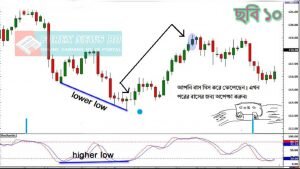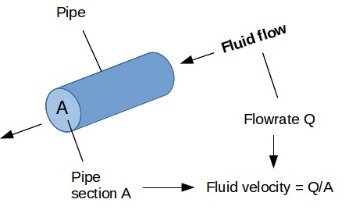
After you buy the breakout, you then set your stop below the breakout candle. In this example, your target is set for the “resistance” area on the bigger picture chart shown above. Notice the difference between the bull flag example above and this pennant example. Both look bullish, but the structure of the pattern is slightly different. You should notice that the uptrend should be rather sharp and accompanied by strong volume.
- Basically, despite a strong vertical rally, the stock refuses to drop appreciably, as bulls snap up any shares they can get.
- The target for a bull flag is derived by measuring the length of the flag pole and projecting it from the breakout point.
- For example, the best bull flags occur at the start of a new uptrend.
- The most common implication of the bull flag pattern is to look for the right time to hop into the trend.
- Once the consolidation period is over, the price should break above the resistance level, indicating that the bullish trend is likely to continue.
It’s not a coincidence that the bullish flag pattern resembles a national flag after all; the name was inspired by the similarities with the national flag. Even though flags and pennants are common formations, identification guidelines should not be taken lightly. It is important that flags and pennants are preceded by a sharp advance or decline. Without a sharp move, the reliability of the formation becomes questionable and trading could carry added risk. Look for volume confirmation on the initial move, consolidation and resumption to augment the robustness of pattern identification.
Mastering the Bull Flag Pattern: Six Simple Steps for Successful Trading
Discover the range of markets and learn how they work – with IG Academy’s online course. Please ensure you understand how this product works and whether you can afford to take the high risk of losing money. All investments involve the risk of loss and the past performance of a security or a financial product does not guarantee future results or returns.
Is a bull flag bullish or bearish?
A bull flag pattern is a chart pattern that occurs when a stock is in a strong uptrend. It is called a flag pattern because when you see it on a chart it looks like a flag on a pole and since we are in an uptrend it is considered a bullish flag.
The question is when to buy if you see a bull flag pattern emerge. You could buy in the consolidation phase where the stock is hitting resistance and support levels but this is a risk. If the pattern doesn’t end up being a bull flag, the stock could go down with you holding it in a down pattern. Instead, some people look to buy at a price just above the resistance level.
A group of indecision candles after a strong move
The high volume into the move lower (flagpole) and low volume into the move higher, are suggestions that the overall momentum for the market being traded is negative. This furthers the assumption that the preceding downtrend is likely to continue. In terms of managing risk, a price move above the resistance of the flag formation may be used as the stop-loss or failure level. In terms of managing risk, a price move below the support of the flag formation may be used as the stop-loss or failure level.
This would be a new high and an indicator that the breakout is in process. You can use a buy stop order to make sure that you get it at the price you want. All three bull flag patterns are perceived as possible signs that a stock that may be trying to break out of a consolidation and continue an upward trend in price. The bull flag pattern itself is essentially just a continuation pattern; it’s just sort of representing a pause or a pullback in the market after a stronger move.
These patterns are helpful for traders who wish to take advantage of short-term and long-term market trends. The trading patterns work in all financial markets, not just the crypto market. A bull flag is comparable to a bear flag, with the exception that the trend is upwards. An intense rally followed by a flag-shaped trend halt helps traders identify bullish flag formations. Even though the bull flag pattern tells about a continuation pattern, the trader’s risk-return profile determines the success of any crypto trading strategy.
Usually, there is a surge in volume as the stock builds the flag pole. Volume then tapers off precipitously as the stock price consolidates. The breakout from the bull flag often sees another increase in volume, although volume may not increase dramatically. The price chart below for America Service Group Inc. is an example of a rectangular bull flag. Also, notice the long lower tails on the candles showing clear buying every time it dips under $10. A common characteristic of bull flags is the typical volume pattern.
The pattern formed by inverting the bull flag stock pattern is called the bear flag stock pattern. We hope this helps you in your trading journey and education in the markets. If you would like to learn more about chart patterns and trading strategies, please check out our free educational resources here at TradingSim. A bull flag fails or is invalidated once it breaks the low of the breakout candle. If we are astute traders who understand support and resistance, we could have gauged the quality of the bull flag as a small consolidation along the way to the resistance area above. This would give us confidence, not only that the move might not be finished, but also as to where our target could be set.
Into the pullback, you’ll want to see a series of lower highs and lower lows. A bull flag means that there is a pause, albeit brief, in the upward momentum of a stock’s move to higher prices. It indicates that the stock might be in a temporary overbought condition, which will likely bring in some early selling pressure in a young bull run. HowToTrade.com helps traders of all levels learn how to trade the financial markets.
Bull Flag vs Bear Flag – Key Differences
So, as the name suggests – bullish Flag pattern – we should expect a bullish move to come out of this pattern. We also have training for building a foundation before a forex strategy matters. The bullish flag pattern is a powerful technical pattern that can develop from the lowest time frame possible (1-minute TF) all the way up to the monthly chart. More, this is a universal pattern that can show up in all markets. Once the bull flag pattern is identified, traders locate the entry point.
Upon the flag forming a significant multi-candle consolidation phase, an entry point is located above the upper bounds of the flag. After an increase in volume is confirmed, a buy order is placed above the flag. And, this appearance makes it a user-friendly, easy-to-identify chart pattern. For all you know, the bull flag pattern is formed in an existing downtrend.
Prices will likely fluctuate during this stage before they begin trending upwards, assuming the bull flag does what is expected. This is because the consolidation creates a resistance line at the higher end, while the lower end is the support line. When the stock price rises above the resistance level and continues in an upward trend, the pattern has been established. After a period of consolidation, the flag must resume the upward trend in order to be considered a bullish flag pattern. Otherwise, the pattern fails, which we’ll discuss later in the post. This resumption should be accompanied by the presence of renewed volume (demand).
Let’s look at some strategies implemented to trading the bull flag. JSI uses funds from your Treasury Account to purchase T-bills in increments of $100 “par value” (the T-bill’s value at maturity). The value of T-bills fluctuate and investors may receive more or https://trading-market.org/ less than their original investments if sold prior to maturity. T-bills are subject to price change and availability – yield is subject to change. Investments in T-bills involve a variety of risks, including credit risk, interest rate risk, and liquidity risk.
Celebrate Earth Day With These 3 Stocks – Schaeffers Research
Celebrate Earth Day With These 3 Stocks.
Posted: Thu, 20 Apr 2023 07:00:00 GMT [source]
A drop and continuation below the breakout point could signal a change in trend. The Relative Strength Index (RSI) is commonly used with bull and bear flags to gauge how overbought or oversold a crypto asset is. While flags have a rectangular consolidation phase, pennants form a triangular shape, with two converging lines creating the consolidation period. Say as a conservative trader, you decide to set your profit target using the distance between the flag’s parallel trend lines. In this case, the difference between the two lines is $300, so you add this amount to the price at the breakout entry point, which is $2,400.
If you can identify key levels on a chart where shorts could be underwater, then see a bull flag form, it could be indicative of a coming squeeze. We discuss this strategy in detail in our post on liquidity traps. Bull flag trading patterns are one of many patterns that traders study in the markets. Trading patterns are a way to simplify the markets and condense information into repeatable, visual formations.

If a bull flag pattern is correctly spotted, it will indicate the continuation of a bull trend that already exists, and the price will increase after the pattern is finished. While no one knows whether the market rally will continue or reverse, traders should follow price action and let the probabilities take care of the rest. While all chart patterns are susceptible to false signals and surprise moves, bullish flags are among the most reliable and effective patterns. Cantel Medical Corp.’s price chart is an example that appears to have broken out from a bull flag pattern.
This information has been prepared by IG, a trading name of IG Markets Limited. In addition to the disclaimer below, the material on this page does not contain a record of our trading prices, or an offer of, or solicitation for, a transaction bull flag formation in any financial instrument. IG accepts no responsibility for any use that may be made of these comments and for any consequences that result. No representation or warranty is given as to the accuracy or completeness of this information.
Gold On The Verge Of Breakout Amid Financial Instability … – Seeking Alpha
Gold On The Verge Of Breakout Amid Financial Instability ….
Posted: Sun, 07 May 2023 16:37:47 GMT [source]
The aim of this article was to study in detail the flag patterns, their main advantages and disadvantages. In addition, we looked at the differences between the bull flag and the bearish flag. In the picture above you can see the EURUSD Forex trading pair with clearly visible elements of the bullish flag pattern.
Let’s take what you’ve learned and develop a Bull Flag trading strategy. You can use a tool like the 50-period moving average to trail your stop loss and only exit the trade if the market closes beyond it. If you wait for a close above the highs, you reduce the chance of a false breakout. But, if the breakout is strong, you end up entering at a much higher price. There are times a Bull Flag Pattern can form when the market is in range, at Resistance.
What happens when a bull flag forms?
A bullish flag consists of the flagpole and a flag. As such, it resembles a flag on a pole. It's constituted after the price action trades in a continuous uptrend, making the higher highs and higher lows.
